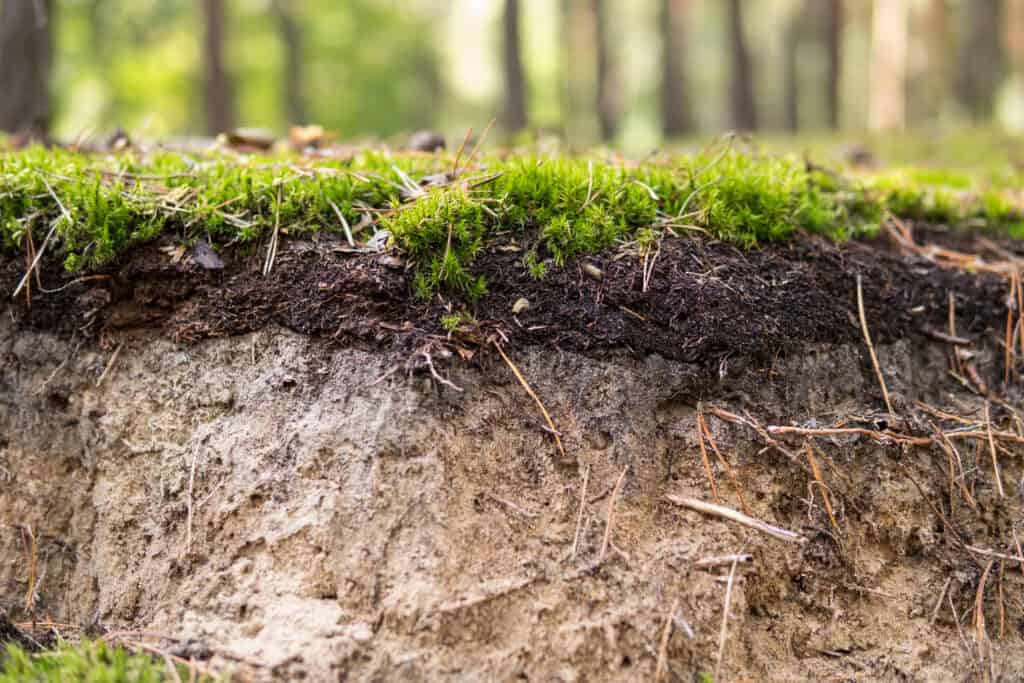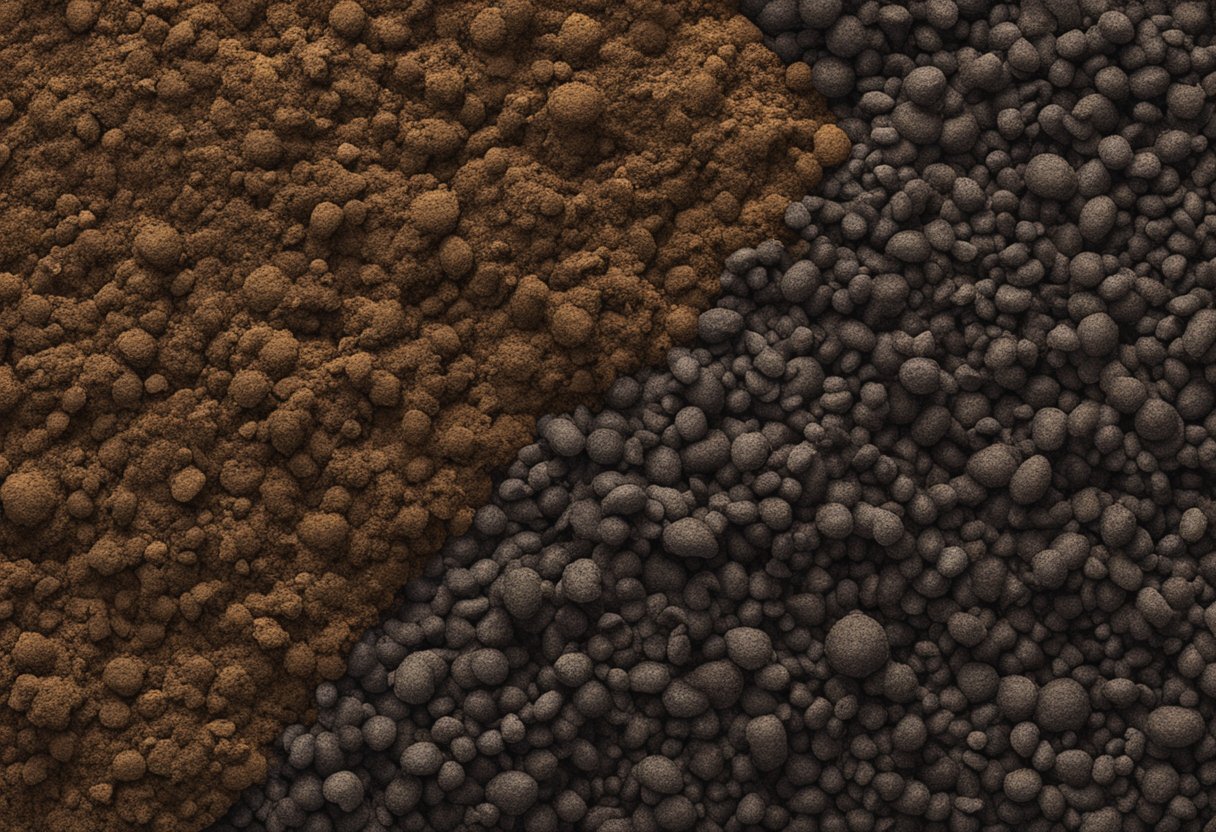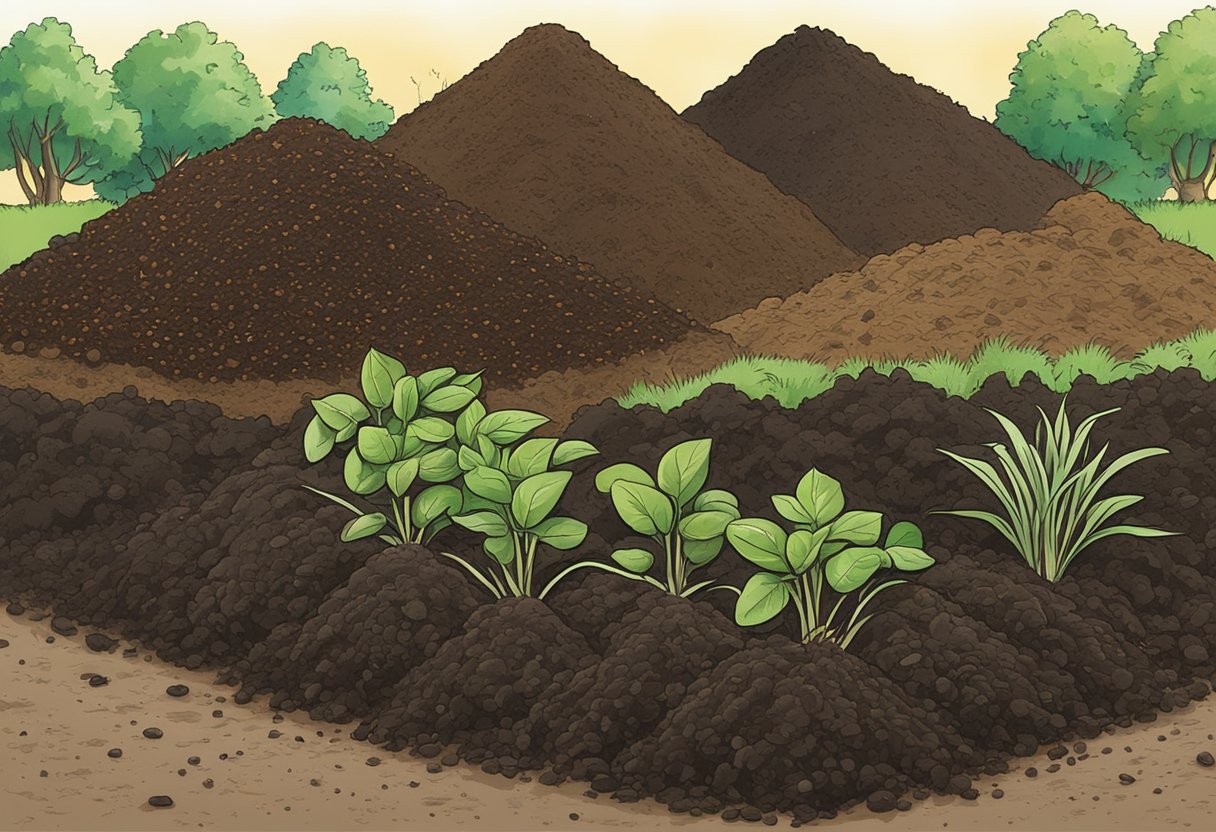As an Amazon Associate I earn from qualifying purchases.
At A Glance
Compost and topsoil serve different purposes in gardening and landscaping but can complement each other when used correctly. Compost is rich in organic matter and nutrients, created through the decomposition of organic material like food scraps and yard waste. It is used to improve soil structure, provide nutrients, and enhance the soil’s microbial activity. On the other hand, topsoil is the uppermost layer of soil, which may or may not be fertile. It serves as a base for planting and landscaping. Mixing compost with topsoil can significantly improve the fertility and structure of the topsoil, making it more conducive for plant growth. While compost provides a nutrient boost, topsoil provides a medium in which plants can establish their roots.
Compost and topsoil are two essential components for any healthy garden. However, many people often confuse the two and are unsure of which one to use. In this article, I will explore the differences between compost and topsoil and help you determine which one is best for your garden.

First, let’s define what compost and topsoil are. Compost is a mixture of organic matter that has been broken down and decomposed by microorganisms. This process creates a nutrient-rich soil amendment that can be added to your garden to improve soil structure, water retention, and nutrient availability. Topsoil, on the other hand, is the top layer of soil that covers the ground. It contains a mixture of organic and inorganic matter and is where most plants grow their roots.
While both compost and topsoil are important for a healthy garden, they serve different purposes. Compost is primarily used to add nutrients to the soil and improve its overall health, while topsoil is used to create a base for your garden beds or to fill in low spots in your yard. Understanding the differences between these two soil components is crucial for creating a thriving garden. So, let’s dive deeper into the specifics of compost and topsoil and how to use them effectively in your garden.
Understanding Topsoil
Composition and Structure
Topsoil is the uppermost layer of soil that covers the earth’s surface. It is a mixture of sand, silt, and clay, and contains a variety of organic matter such as decomposed plant and animal materials, as well as living organisms like bacteria and fungi. The ratio of sand, silt, and clay in topsoil determines its texture and structure.
The structure of topsoil is important for plant growth as it affects the soil’s ability to retain water and nutrients. A well-structured topsoil has a crumbly texture that allows water to penetrate and air to circulate, while also holding onto nutrients for plant uptake. However, poorly structured topsoil can lead to problems such as waterlogging, nutrient leaching, and poor plant growth.
Uses of Topsoil
Topsoil has a variety of uses in landscaping and gardening. It is often used to level out uneven landscapes or to create a base layer for new gardens. It can also be used to improve the soil quality in existing gardens by adding organic matter and improving soil structure.
There are different types of topsoil available for purchase, including natural topsoil and bagged topsoil. Bagged topsoil is often categorized into three types: premium, general-purpose, and economy. Premium topsoil is the most expensive but has a higher fertility level and better soil structure. General-purpose topsoil is suitable for most gardening needs, while economy topsoil is the least expensive but may contain more rocks and debris.
Quality of Topsoil
The quality of topsoil is important for plant growth. High-quality topsoil should have a good balance of sand, silt, and clay, and contain a variety of organic matter. It should also be free from contaminants such as pesticides and heavy metals.
To ensure the quality of topsoil, it is recommended to purchase from reputable suppliers or to test the soil before use. Testing the soil can help determine the soil’s pH level, nutrient content, and organic matter level.
In summary, topsoil is an important component of healthy soil and plays a vital role in plant growth. Understanding the composition and structure of topsoil, its uses, and the quality of topsoil is essential for successful gardening and landscaping projects.
Topsoil vs Compost

When it comes to gardening, choosing the right soil is crucial for the success of your plants. Two common types of soil used in gardening are topsoil and compost. While they may seem similar, they have distinct differences that make them better suited for different purposes.
Nutrient Content
One of the main differences between topsoil and compost is their nutrient content. Topsoil is the uppermost layer of soil that contains a mix of organic and inorganic materials. It is usually rich in minerals and nutrients that plants need to thrive. However, the nutrient content of topsoil can vary depending on its source and location.
On the other hand, compost is made from organic materials such as food waste, leaves, and grass clippings. Compost is a rich source of nutrients and organic matter, making it an excellent soil amendment. It is often used to improve soil fertility and structure.
Drainage and Aeration
Another important difference between topsoil and compost is their drainage and aeration properties. Topsoil is generally well-draining and has good aeration, which allows roots to grow deep and strong. However, some types of topsoil can be heavy and dense, making it difficult for water to penetrate.
Compost, on the other hand, has excellent drainage and aeration properties. Its porous structure allows water to flow through easily, preventing waterlogged soil. This makes it an ideal soil amendment for plants that require good drainage.
Weed and Disease Control
Topsoil and compost also differ in their ability to control weeds and diseases. Topsoil may contain weed seeds and pathogens that can harm your plants. However, some types of topsoil are treated to remove weed seeds and pathogens, making them safer to use.
Compost, on the other hand, is less likely to contain weed seeds and pathogens. This is because the high temperatures generated during the composting process kill most weed seeds and pathogens. Additionally, the beneficial microorganisms found in compost can help suppress disease-causing organisms in the soil.
Overall, both topsoil and compost have their advantages and disadvantages. Choosing the right soil for your garden depends on your specific needs and the plants you are growing. While topsoil is ideal for filling in low spots and building up raised beds, compost is better suited for improving soil fertility and structure.
Practical Applications

Gardening and Landscaping
When it comes to gardening and landscaping, both compost and topsoil have practical applications. If you’re starting a new garden or flower bed, it’s recommended to use a mixture of topsoil and compost to create a nutrient-rich base for your plants to grow in. This combination will provide a good balance of nutrients, water retention, and drainage.
If you’re working with an existing garden or lawn, topdressing with compost is a great way to add nutrients and improve soil structure. Simply spread a layer of compost over the existing soil and gently rake it in. This will help to feed the existing plants and create a healthier environment for new seedlings.
Lawn Care
When it comes to lawn care, topsoil is typically used to level low spots or improve drainage issues. If you’re starting a new lawn, it’s recommended to use a high-quality topsoil to ensure that the grass roots have a good environment to grow in. When laying sod, it’s also a good idea to use a layer of topsoil as a base to help the roots establish themselves.
Compost can also be used in lawn care, but it’s typically used as a topdressing to add nutrients to the soil. This can be especially helpful if you have a thin or patchy lawn, as it will help to promote healthy growth.
Soil Amendment
Both compost and topsoil can be used as soil amendments to improve the overall health of your soil. If you’re working with heavy clay soil, adding compost can help to break up the clay and improve drainage. If you’re working with sandy soil, adding topsoil can help to improve water retention and nutrient retention.
When building raised beds or planting in containers, it’s recommended to use a mixture of topsoil and compost to create a nutrient-rich environment for your plants to grow in. This will help to ensure that your plants have all the nutrients they need to thrive.
Overall, both compost and topsoil have practical applications in a variety of gardening and landscaping projects. By understanding the unique properties of each, you can choose the right product for your specific needs and create a healthy environment for your plants to grow in.
Pros and Cons of Topsoil and Compost
When it comes to gardening, choosing between topsoil and compost can be a difficult decision. Each has its pros and cons, and it’s important to understand them before making a decision. In this section, I will outline the advantages and disadvantages of both topsoil and compost.
Topsoil
Pros
- Bulk: Topsoil is available in bulk, making it a cost-effective option for larger gardening projects.
- Space: It is often sold in large bags, making it easier to store and transport.
- Color: Topsoil is usually darker in color than compost, giving it a more uniform appearance.
- Thickness: It is thicker than compost, making it ideal for filling in holes or leveling out uneven ground.
Cons
- Nutrients: Topsoil is not as nutrient-rich as compost, so it may not be the best option for plants that require a lot of nutrients.
- Drainage: It can be heavy and retain water, which can lead to drainage issues in some soils.
Compost
Pros
- Nutrients: Compost is rich in nutrients, making it an excellent choice for plants that require a lot of nutrients.
- Waste reduction: Composting is a great way to reduce waste and recycle organic material.
- Soil structure: Compost improves soil texture and structure, making it easier for roots to grow.
Cons
- Bulk: Compost is usually more expensive than topsoil, especially if you need to buy it in bulk.
- Space: It can take up a lot of space to store and transport.
- Color: Compost can vary in color, which can make it harder to achieve a uniform appearance in your garden.
Environmental Impact
As we become more aware of our impact on the environment, it’s important to consider the environmental impact of using compost and topsoil. Both compost and topsoil have benefits and drawbacks when it comes to their impact on the environment.
One of the main environmental benefits of compost is that it reduces the amount of waste that ends up in landfills. According to a study published by the National Center for Biotechnology Information, the US can increase the compost to waste ratio by 18% from 10% by the end of 2030, reducing carbon emissions by 30 million tons a year while saving around 16 billion USD in municipal waste management costs. This is because composting organic waste reduces the amount of methane gas produced in landfills, which is a potent greenhouse gas.
On the other hand, the production of topsoil can have a negative impact on the environment. Topsoil is often produced by stripping the top layer of soil from land that is being developed for other purposes. This can lead to soil erosion, loss of habitats for wildlife, and decreased soil quality. Additionally, the production of topsoil often requires heavy machinery, which can contribute to air and noise pollution.
When it comes to using compost and topsoil in gardening, it’s important to consider the source of the materials. Compost made from paper and other organic materials can help reduce the amount of waste that ends up in landfills, while compost made from food scraps can help reduce methane emissions. Sifted compost can also be a good option, as it has a finer texture and can help improve soil structure.
When purchasing topsoil, it’s important to look for premium grade soil that has been screened and is free of contaminants. This can help ensure that the soil is of high quality and will support healthy plant growth. Additionally, using topsoil that has been sustainably produced can help reduce the environmental impact of gardening.
Overall, both compost and topsoil have benefits and drawbacks when it comes to their environmental impact. By choosing sustainable options and being mindful of the source of these materials, gardeners can help minimize their impact on the environment.
